- News
- Reviews
- Bikes
- Accessories
- Accessories - misc
- Computer mounts
- Bags
- Bar ends
- Bike bags & cases
- Bottle cages
- Bottles
- Cameras
- Car racks
- Child seats
- Computers
- Glasses
- GPS units
- Helmets
- Lights - front
- Lights - rear
- Lights - sets
- Locks
- Mirrors
- Mudguards
- Racks
- Pumps & CO2 inflators
- Puncture kits
- Reflectives
- Smart watches
- Stands and racks
- Trailers
- Clothing
- Components
- Bar tape & grips
- Bottom brackets
- Brake & gear cables
- Brake & STI levers
- Brake pads & spares
- Brakes
- Cassettes & freewheels
- Chains
- Chainsets & chainrings
- Derailleurs - front
- Derailleurs - rear
- Forks
- Gear levers & shifters
- Groupsets
- Handlebars & extensions
- Headsets
- Hubs
- Inner tubes
- Pedals
- Quick releases & skewers
- Saddles
- Seatposts
- Stems
- Wheels
- Tyres
- Health, fitness and nutrition
- Tools and workshop
- Miscellaneous
- Cross country mountain bikes
- Tubeless valves
- Buyers Guides
- Features
- Forum
- Recommends
- Podcast
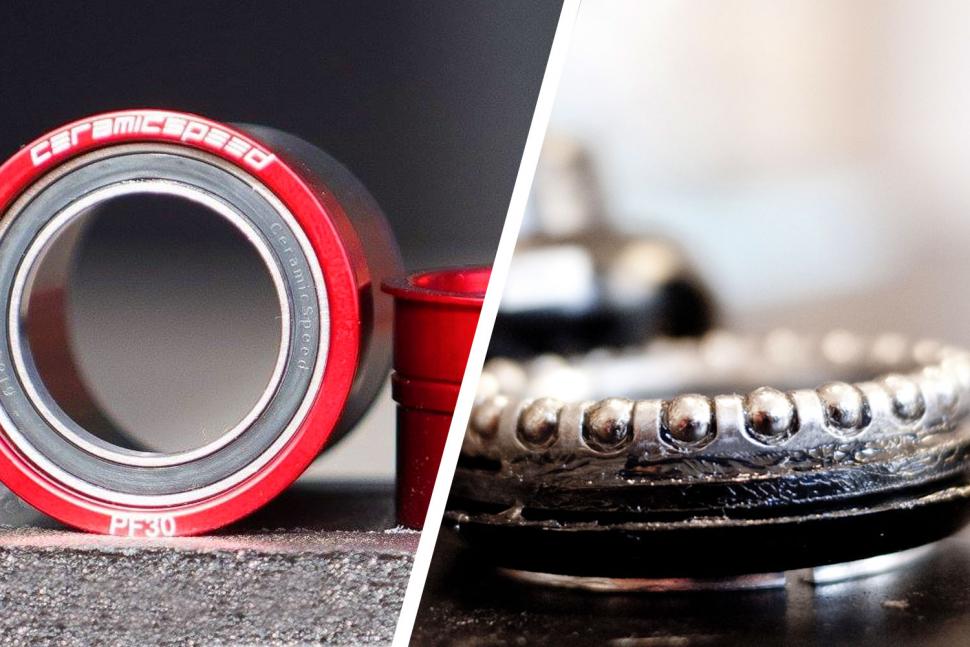 Ceramic bearings the pros and cons Nov 2018
Ceramic bearings the pros and cons Nov 2018Should you buy ceramic bearings? Expert opinions polled
[This article was originally published November, 2015 and updated November, 2019]
Despite the latest advances in road bike design and technology, your bicycle still relies on the humble ball bearing to ensure it all runs smoothly. There are bearings in the wheel hubs, the headset, bottom bracket, pedals and jockey wheels, and they're commonly made from steel. There has been a lot of hype about ceramic bearings in recent years and many people claim they offer a performance upgrade. But what are ceramic bearings and what are the pros and cons?
While regular bearings are made from stainless steel, ceramic bearings are made from ceramic silicon nitride (Si2N4). Rolling resistance is the key trump card promoted by ceramic bearing fans. Because ceramic bearings are rounder with a smoother surface and more uniform size, friction is reduced and that can contribute to a less energy required to turn the cranks or spin the wheels. A ceramic bearing is also harder than steel bearings (up to 30%), which improves durability, and they also don’t rust so less maintenance should be required.
Most sealed ceramic bearings are actually hybrid ceramic bearings, which combine a steel race with ceramic ball bearings. Full ceramic bearings use ceramic races, which can be lighter and provide the lowest friction, but come at a durability cost. Unsealed ceramic bearings can be used to upgrade components that don’t use cartridge type bearings, like cup and cone hubs.
It’s in the professional peloton, a place obsessed with marginal gains, that ceramic bearings have become popular in the past couple of years. And naturally, where pros lead, amateur racers and sportive cyclists follow, keen to take advantage. Should you be following in the footsteps of the pro racers then, and upgrading your bike with ceramic bearings?
CeramicSpeed is a Danish company, founded in 2007, that specialises in supplying high-quality ceramic bearings to the cycling industry, and is a favourite of many professional cycling teams - you don’t have to look far to spot the telltale company sticker on any frame or hub fitted with the bearings. It’s seen a massive shift in the last two years with more customers keen to take up the ceramic advantage. The advantage, according to the company, is a saving of up to 9 watts with CeramicSpeed bearings in the hubs, jockey wheels and bottom brackets compared to a set of standard bearings
“The main advantages with CeramicSpeed bearings over regular bearings are two-fold,” explains CeramicSpeed Managing Director Martin Banke. “Longevity of a well-built high-quality ceramic bearing, in many cases, can be up to 10 times longer than commonly used stock bearings. The 'rule of thumb', as we like to call it when built well, and of high-quality materials, a ceramic bearing should always be able to outlast and outperform a steel bearing.
“The second advantage of ceramic bearings over stock steel bearings is their performance under load in reducing drag. Performance cyclists are performance driven and all data shows that the best performing bearings for reducing drag are ceramic bearings.”
That, in theory, should mean less energy is required to turn the wheels or cranks. Add the lower weight and improved durability, and why wouldn’t you run ceramic bearings? But are all ceramic bearings the same? Of course not, CeramicSpeed is keen to point out that not all ceramic bearings are made equal, and it tells us that a ceramic bearing built poorly with low-quality materials will deliver very poor longevity.
“A lot of bearings can spin well in the hand but that by itself is not enough,” says Banke. “It is really about the performance of a bearing under load, both drag reducing performance and lifetime performance. We are now starting to see a 'shift in the seas', a common understanding that ceramic does last and is very advantageous if of a high enough quality.”
When the benefits sound that good, you’d think all component manufacturers would be embracing ceramic bearings, right? Highly regarded British component manufacturer Hope Technology reckons the efficiency savings are simply too negligible to make them worth the increase in cost.
“We have looked at ceramic bearings in the past and talked them over with our bearing suppliers,” explains Hope’s Alan Weatherill. “They do run with less friction, which offers a significant advantage in industrial applications running at 20,000 rpm. A tiny percentage reduction in friction here can equate to a worthwhile power saving, but when you're only turning at 300 rpm, as you do on a bicycle a small percentage increase in efficiency will make a negligible change to your power output. Certainly not worth the significant increase in cost."
Leading industry wheel dynamics expert and CEO of Edco Wheels , Paul Lew, backs this up and reckons it makes ceramic bearings a poor choice for hubs and headsets, also adding that they offer no weight savings and are only beneficial in environments where high rpm (revolutions per minute) are required.
“For bottom bracket applications, the maximum sustained rpm may be 130,” explains Lew. “For wheel hub applications, the maximum rpm may be 500 – 600 revolutions per kilometer (depends on wheel/tyre diameter). The maximum rpm values in cycling are far below the typical ideal rating for ceramic bearings which is 10,000 rpm+.”
It’s clear that Alan and Paul agree that the factors that make a ceramic bearing well-suited to industrial and medical equipment applications, and high-altitude operating drone motors (Paul does a lot of work designing drones) where the rpm is high, the load is low and the operating conditions are clean, are factors that mean they’re not suited to cycling.
“Ceramic bearings are beneficial in environments not requiring grease lubrication,” says Lew. But a bicycle is expected to cope with a vast range of conditions, rain and dirt, and where maintenance schedules may be less than optimal, and the last thing you want is to ride bearings without grease. It’s this requirement to cope with the conditions common to cyclists that offset the promised lower rolling resistance of a ceramic bearing, according to Paul Lew.
“The rolling resistance of a ceramic bearing compared to an ABEC 3, 5 or 7 steel ball bearing is offset by the resistance of the grease,” he says. “In order for a ceramic ball bearing to out-perform a steel ball bearing, grease is not an option. Does this mean I should run my ceramic ball bearings dry or with light oil? Yes, but you won’t like the result in an environment where the bearings can become contaminated. If you run your bearings dry they will feel gritty and rough.”
Hope’s Alan Weatherill concurs with Paul Lew’s conclusion that ceramic bearings are not suited to the demands of cycling and says their suitability to industrial machinery doesn’t necessarily provide the performance benefit for cyclists that many people and companies claim they do.
“Another issue with using them [ceramic bearings] on bicycles is their hardness,” says Weatherill. “While this again is an advantage in many industrial applications, it's a major drawback on bikes. The shocks from hitting potholes and other road blemishes impact the hard ceramic balls into the softer steel races commonly used. This dent in the race is then felt when the bearing is rotated, giving you rough bearings.”
The less polite stance
Weatherilll and Lew are measured in their scepticism about the overall benefits of ceramic bearings. Rather more forthright is Sachin Hambini of Hambini Engineering. An aerospace engineer who has built up a cult following for his scathing criticism of the quality of manufacturing in the bike industry, especially where press-fit bottom brackets are concerned.
Here's what he has to say about ceramic bearings. Warning: adult language.
How much?
Then there is the fact that ceramic bearings aren’t cheap. CeramicSpeed’s BSA Road external bottom bracket for threaded frames costs £298. A Shimano Dura-Ace 9000 bottom bracket cost £39.99, much less if you shop around. A CeramicSpeed bearing upgrade kit for Campagnolo and Fulcrum wheels will set you back £120, and Zipp charges £194 for a CeramicSpeed bearing kit for its wheels. That makes upgrading to ceramic bearings a serious investment, fine for a professional cycling team, less so for a privateer racer.
The premium for ceramic bearings is high then, and their advantages, while looking promising in an ideal world, appear to stack up much less in the demanding environment that a bicycle is expected to perform and survive in. So should you choose ceramic bearings? We’ll let Paul Lew have the last word.
“Although the re-selling markup/ margin for ceramic bearings is significant for manufacturers such as Reynolds, and they could represent a profit-center for the brand, we choose not to offer them because they don’t improve performance, and they represent a consumer cost that we can’t justify, and that’s contrary to our value system," he concludes.
David worked on the road.cc tech team from 2012-2020. Previously he was editor of Bikemagic.com and before that staff writer at RCUK. He's a seasoned cyclist of all disciplines, from road to mountain biking, touring to cyclo-cross, he only wishes he had time to ride them all. He's mildly competitive, though he'll never admit it, and is a frequent road racer but is too lazy to do really well. He currently resides in the Cotswolds, and you can now find him over on his own YouTube channel David Arthur - Just Ride Bikes.
Latest Comments
- Rendel Harris 50 min 24 sec ago
That's correct, but it raises an interesting question: if the defendant used a knife the starting point for a minimum term is twenty-five years, if...
- InTheLakes 1 hour 11 min ago
Is my bike insurer the only one that insists the bike is locked so the lock goes through the frame when not in use, even if stored indoors. This...
- Rendel Harris 1 hour 24 min ago
And guns don't kill people, people kill people et cetera et cetera. Nuclear weapons aren't dangerous until somebody presses the button. It's a...
- Born_peddling 4 hours 57 min ago
To be fair as much as I like to see decent public rack being put up just not at the cost of taking spaces like these specifically designed to allow...
- BBB 6 hours 56 min ago
Stop beating a dead horse, people. This story isn't really about trans competitors but about the elected felon and his autocratic regime, targeting...
- brooksby 8 hours 6 min ago
Has it? Okay. TBH I was just trying to be funny by quoting FBs catchphrase back at them...
- Hirsute 9 hours 21 min ago
You've missed the bit where it's going to court.
- froze 9 hours 46 min ago
The Silca is not that great, if you go online to Silca and look at the scale they use it is very poorly designed with the readings far to close...
- froze 9 hours 58 min ago
I gurantee you this is happening to millions of products sold all over the world.
- froze 10 hours 31 min ago
Roughly about 66% to 75% of the flats that I get I can repair the tube without ever removing the wheel from the bike! This is an old trick I was...
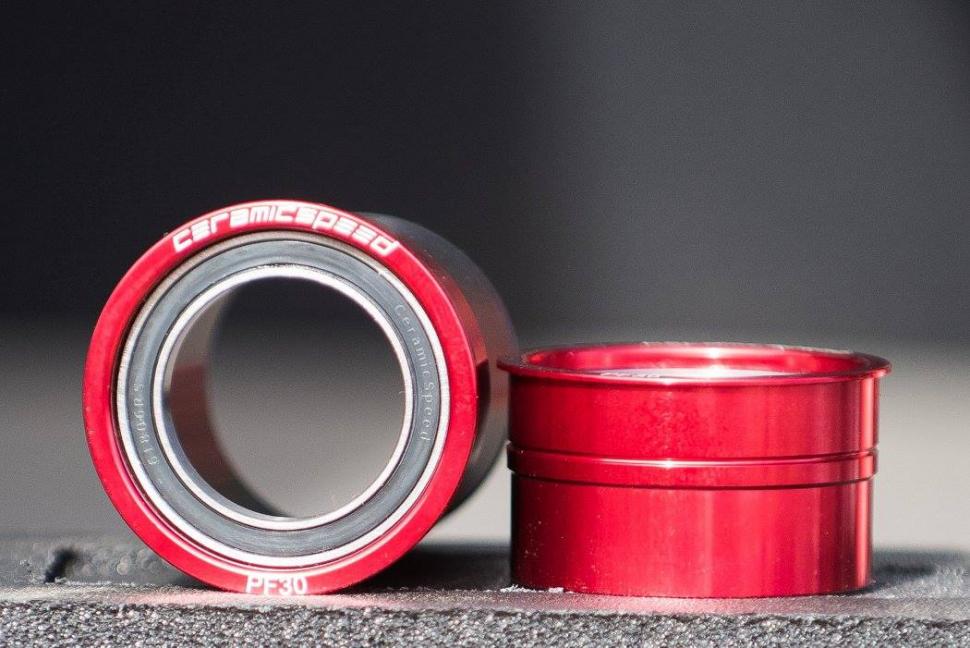
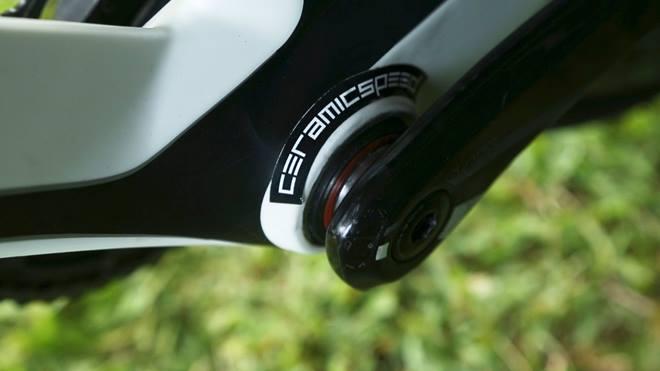
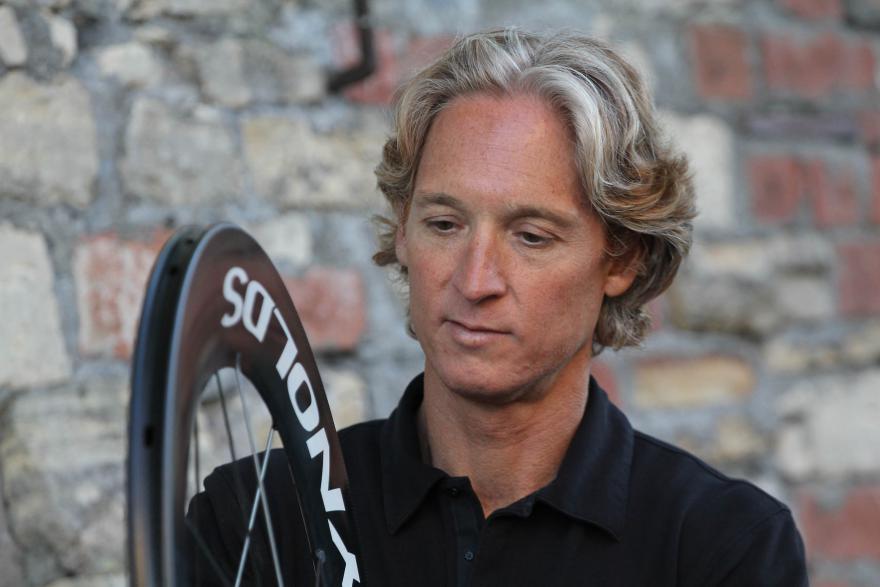
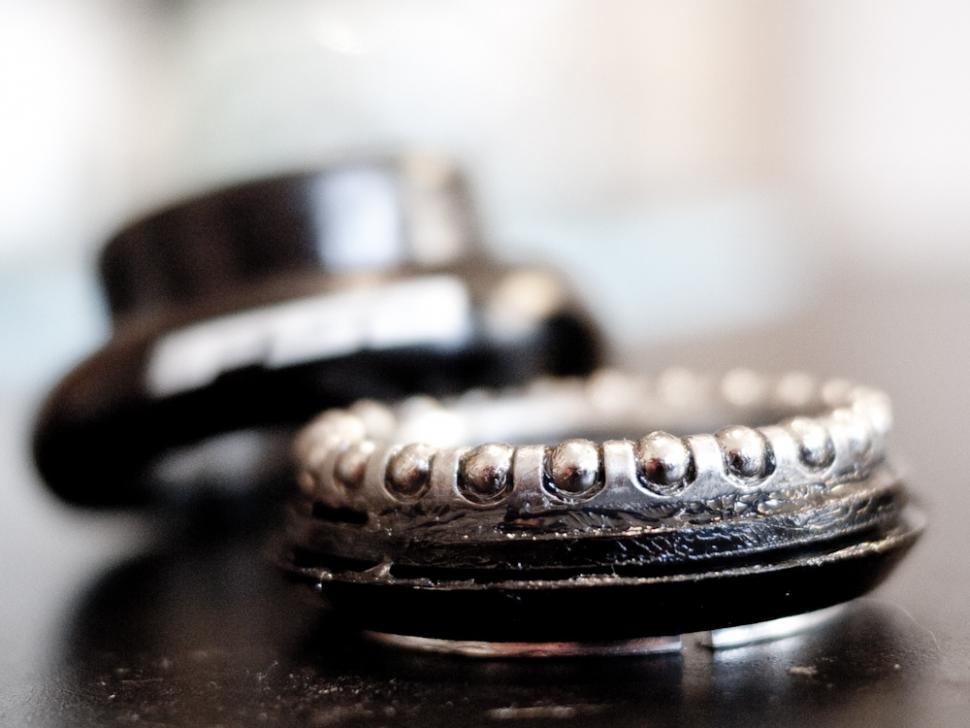

Add new comment
80 comments
thanks for the honesty re: ceramic bearings
saves me some cash, and peace of mind. too.....
Hmmm, how come the mention of aerozine and other affordable ceramic bottom brackets did not rate a mention. The current option of $58 usd on ebay has to be a reasonable option..not to mention a Taiwanese option for
Very true. The set I've just fitted to my Hunt winter wheels said made in Italy on the packet.
A couple of weeks ago I put in a 29 year old Campag Croce d'Aune (second tier) bottom bracket in a classic bike I'm building up.
Once adjusted, it spun longer than even a brand new set of Ultratorque or Hollowtech II bottom bracket bearings. Without the chain on, the cranks just spun and spun. Not as stiff, but a lot smoother. 'Sweet as a nut' as someone said above.
Could it be because there's more lever advantage over a smaller diameter bearing? Heavier cranks giving more angular momentum when spun?
I don't know if its been linked before but if you're remotely interested in splashing the cash on ceramic bearings watch this first: https://www.youtube.com/watch?v=o7iZVfSDbiA
(Spoiler Japanese steel bearings were better but I can't remember why...)
I *think* this video is an explanation of someone else's internet paper....
Paul Lew's articles are no longer available on Reynolds web site. They were a good informative read. Maybe he can publish them again somewhere.
I have S-Works venge 2019 just found out today by contacting ceramic speed service on wheel bearings 1000km to 1500km so about every 2 weeks . R S Hope hubs on wheelsmith wheels over 2 year still spin very free ceramic bearings gritty when wheel held.
No, unless you're a washing machine.
Why is this article dated 7th Nov 2019 ... but the comments are up to 3 years old?
Sorry to be the one who breaks this to you but... you've been in a coma since 2016
This article's so old, that hairstyle is back in fashion again.
This article's so old, that hairstyle is back in fashion again.
Should add ceramic bearings to that cycling snake oil article you put up a few days ago.
Since my washing machine quote 8 months ago, I've acquired a Factor 02 which has Ceramicspeed bearings (BB and wheels) fitted as standard. I can't notice the difference over my other bikes - all of are 15+ years old and either Chris King / Shimano Ultegra or Chorus / Chorus, and Record / Record....
One more thing the bike industry told us was better and we should spend money and then it turns out it is not even AS GOOD as what we alreay have...
High end bikes have become status purchases and ceramic bearing were just one more way to extract money. Those stupid oversized pulleys are the same thing.
If, and it seems it is from the above, the main argument against CB is the cost then they're worth it if available cheaper.
My race wheels on my race bike are lightweight Chinese 1360gram aluminium
ones. They have factory supplied CBs. I have had the same set without
CBs. The CBs roll smoother for longer and feel faster = worth it for me for race only wheels.
One the same bike I've fitted higher end (but still not expensive) CB BB and pulley wheels. As above - faster for longer.
As this bike only sees say 25 mostly dry races a year I see these bearings lasting a few years.
Its pretty easy to get commodity ceramic bearings from a bearing factor for only a small uplift.
For example - full set of 4 replacement bearings for Hunt Sprint hubs £25 (from Hunt). Full set of ceramic ones from Random online bearing store £37.
I have a mate with an embarrassingly expensive handmade Titanium bike and he got it fitted with all sorts of exotic parts. It had a ceramic bearing BB that never worked even at the cost of over £200. It kept coming undone. The tightening instructions didn't work, and it would tighten up to being seized. Pointed out how many sets of bearings he could throw away for the price of his troublesome supposedly last forever BB.
Then the ceramic wheel bearings in the super-lightweight hubs went as rough as a badger's proverbial - he spoke to several bearing suppliers and they all explained that the ceramic bearings were too hard - fine for a pro and a single use time trial, useless for on the road where the mismatch in hardness caused the steel surface to pit.
So now he's spent another small fortune to downgrade all the super parts.
He reckons the most reliable bike he ever bought was his Giant Defy Advanced Pro from about 2015 which cost him about 25% of his handhbuilt exotica grief machine.
Careful! You have to break it to him gently.
20-30 years ago, people griped that the bike industry was trying to stop us buying good old 531-framed bikes. Why would anyone want to pay so much extra for soulless aluminium?
I remember arguments that nobody needs a stupid status purchase like clipless pedals or an 8-speed cassette; after all, Eddy Merckx won the TDF without such fripperies.
Technology changes and the Luddites move along with it, keeping one pace behind.
Hi Performance Bikes are like High performance cars.... a maintainance nightmare. Decent commodity stuff just works.
That's a massive 48% extra though.
I'm going to protest too much and say that my Factor came with these bearings as standard and it doesn't have the stupid oversized pulleys (though they probably add more efficiency to pedalling than ceramic bearings)....
I've had it 9 months or so now and still can't tell the difference - but that said all the bearings on my bikes are high end. Chris King bearings are a pain in the arse and need servicing regularly. Could have bought some DT Swiss 240s for the money....
I have ceramic BB bearings from c-bear, not because they're ceramic, but because 386evo shells are a pain.
Needed something that would accommodate my Shimano cranks with no adapters, there's a little less friction but I honestly don't notice while riding.
An interesting (if your a bit of a boring geek like me) compromise between steel bearings and ceramics would be to have a DLC (diamond like coating) applied to steel bearings, I've had this done for motorsport applictaions in the past and it's much cheaper than switching to ceramics which can cost £4K a corner for race car wheel bearings!
When they suggest ceramic bearings for headsets then you know something is wrong.
One of my sons bought an overpriced (at least I thought at the time) fidget spinner on holiday recently. It seems a feat of engineering to my unengineery mind. If you so much as look at it it will spin for 3 days. It is not your common garden fidget spinner, and my son loves it.
I'm fighting an internal battle daily to keep it as the toy he loves and not hack it into my collection of Pieces of Stupid Shit I Don't Properly Understand And Shouldn't Have Starteds currently on my garage worktop.
Good article with some relevant contributions from people with proper subject knowledge (Hope and Reynolds). Their comments are spot on.
The single biggest issue when specifying bearings for bikes is the trade-off between sealing efficiency and low drag. Generally you can't have both.
Use quality replacement steel bearings from one of the four major global brands SKF, FAG, NSK or NTN and choose the seal type depending on intended use. So for example an indoor track bike could use shielded bearings (metal shields with no rubbing contact, often referred to as ZZ type). For a MTB that you wash down with a pressure washer you will want full contact rubber seals (2RS, LLU, DDU etc). Consider removing the inboard seal to reduce drag.
The majority of ceramic bearings manufactured globally are hybrids; metal rings with ceramic balls. These are typically used in high speed, low load applications such as machine tool spindles. As ceramic has a lower mass than steel the centrifugal forces generated by ceramic balls at very high speeds are significantly lower than for steel balls. As a result ceramic hybrids runs cooler with less drag. However these effects are not measureable at speeds associated with cycling.
For example I have some DT hubs with 6902 bearings (15x28x7mm). These steel bearings are rated for speeds up to 16,000rpm with full contact rubber seals or 24,000rpm with metal shields by the manufacturer. At 50kmh my wheel would only be rotating around 400rpm !
Also with a cartridge bearing you should never need to remove the seals to wash it out and re-grease it. Basically if dirt or water has got past the seals then it is already too late and time to replace it.
+1 THIS ^^
Also I'd add to anyone who has never span a decent steel bearing between their fingers without grease, give it a go, it's not dissimilar to the ceramic ones without grease we are told are so much better'er.
Hi nice article road.cc! I also saw this video: https://www.youtube.com/watch?v=vPWgtscgfa0 both of which seem to suggest ceramics bearings don't work as well as claimed? Maybe the gig is up for ceramics? bw Maria
Pages